Being Overweight
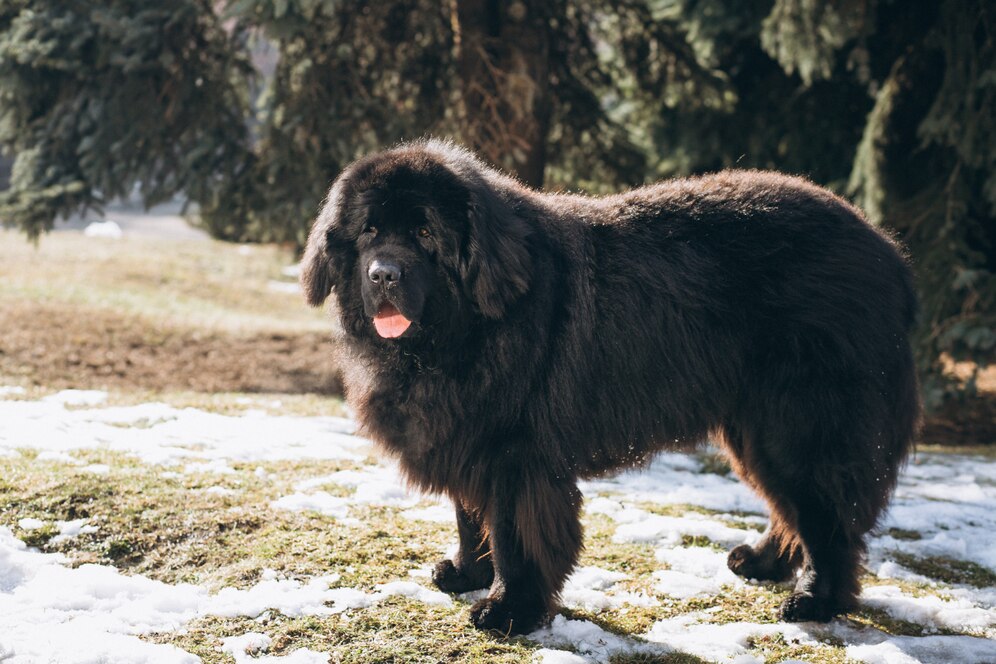
The unsettling truth is that canine obesity is on par with the human obesity epidemic, with similarly deadly effects. Having extra weight on your dog means more than simply a snugger collar—it means a life on the verge of diabetes, heart disease, and excruciating joint discomfort. The worst part? You have the ability to make a difference in your dog’s life since you are in charge of two essential areas: exercise and diet. Avoid the pitfall of associating love with excess treats or leftover food from the table; otherwise, you risk endangering your dog’s life.
Neglecting Parasite Prevention
It’s simple to ignore those microscopic bugs that could pose a serious threat to your dog’s health, but when it comes to parasites like fleas, ticks, and heartworms, prevention really is key when it comes to treating heartworms. Consider this: in addition to being bothersome, fleas and ticks are tiny, hazardous intruders that can carry diseases like Lyme and cause your pet great suffering.
Sensitivity to Noise
Certain sensitive puppies may find loud noises, like as fireworks or thunder, to be quite distressing. They only hear horrible booms and crashes that cause their hearts to rush in fear while we see festivities. Dogs with noise phobia have no joy since they actually view those noises as dangers that set off their fight-or-flight reaction. Try your best to provide your nervous dog with a secure haven during storms or loud activities.
Compulsive Habits
Oh no, is your dog acting strangely and chasing its tail as if it were possessed? Or walking aimlessly about the space without any purpose? Dogs who lick excessively, chase their tails, or pace incessantly are known to be anxious or bored. Over time, compulsive behaviours can turn into unhealthy obsessions, even if they may first appear adorable or unique.
Digging
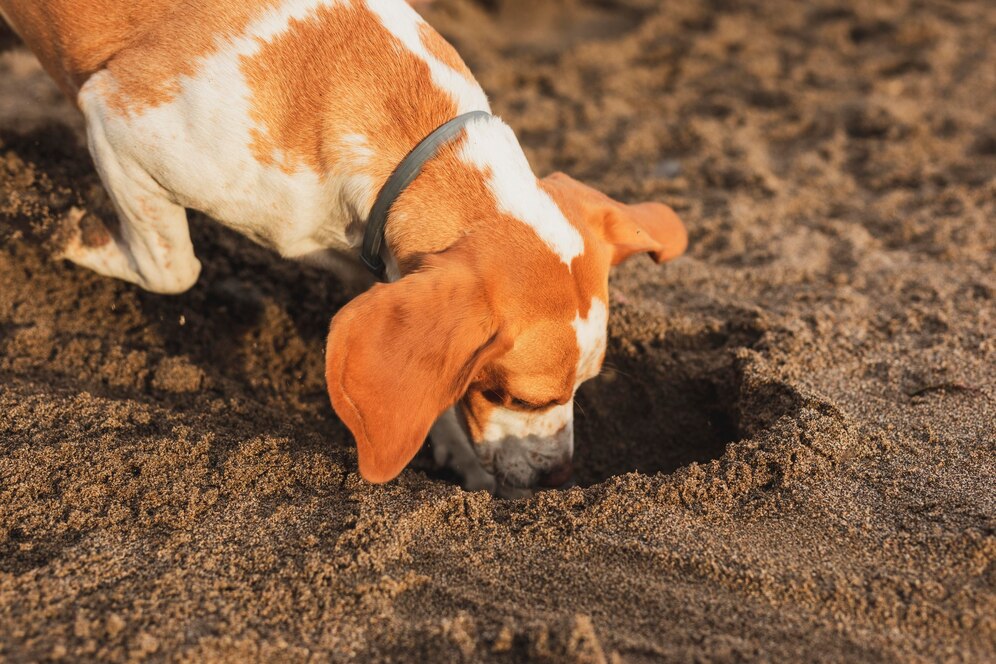
Your dog is searching for more than simply buried riches when they start digging up your yard or garden. Our dog friends can actually relieve some of their stress by digging. Consider it their take on a relaxing yoga practice or a stress ball. Dogs who struggle with separation anxiety or who are left alone for extended periods of time frequently point their paws downward. They’re putting all that stored up energy into a constructive endeavour by digging, which offers a physical and mental relief.
Mounting
Consider this before assuming that your dog is merely being mischievous or domineering: Typically, mounting indicates that your dog is experiencing intense emotions. This could be anything from experiencing anxiety to being overly excited.
Improper Grooming
Though it’s easy to forget, poor grooming can cause problems with your dog’s skin, nails, teeth, ears, and coat, which can be very unpleasant. Frequent brushing gets rid of stray hair and mats before they become tangled or ingested. Nail trimming prevents nails from breaking or becoming excruciatingly overgrown. Weekly ear examinations help to avoid infections, and routine cleanings maintain healthy, open canals.
Fear-Driven Behaviour
You’re probably dealing with fear-based behaviours when your dog suddenly becomes a trembling wallflower, runs from unfamiliar surroundings, or perhaps displays a hint of protective aggression. Your pet seems to be saying, “Watch out! even in situations when there isn’t a clear threat. These anxious periods in dogs are cries for support and understanding, not just temporary emotional glitches.
Perked Ears
Picture your dog’s ears abruptly springing erect, as if they were tuned to a unique radio station that only they could hear. Perhaps they heard an odd noise, or they saw a squirrel dancing on the fence. Consider gazing where your dog is looking to see what has their attention. You’ll most likely discover what kept them alert.
Overindulgent Barking
Is your dog acting like an overactive alarm clock and barking incessantly? Dogs who bark loudly and frequently are usually indicating boredom, anxiety, or a need for attention. If they bark when left alone, it could be due to separation anxiety. Offering them physical activity, companionship, and mental stimulation helps lessen their suffering.
The freeze
Have you ever watched your dog suddenly become still while playing with other puppies? Occasionally, it’s merely a dramatic pause, like a dog saying, “hold my treat, let me think.” However, if your dog appears to be in a tight, frozen pose, it could be a sign that they are experiencing anxiety, that they are cornered, or that they are aware of an impending threat.
Rolling Over
Yes, the traditional dog rollover—a skill that combines acrobatics and nonverbal cues. They’re probably indicating submission or requesting belly rubs if they have a big tail wag and a relaxed mouth—both of which are generally good gestures.
Resources guarding
When you went to their meal bowl, did your normally nice dog suddenly become grumpy and aggressive? The traditional symptoms of resource guarding in dogs include snapping, snarling, and stiffening up. They are fearfully defending things they cherish greatly, such as food, toys, and places to sleep. This is not a sign of authority; rather, it is an act of dread and mistrust. Don’t just chastise them; that will make their insecurity worse. Rather, get a trainer’s assistance to change the underlying feelings.
Cowering

A dog that cowers is expressing their feelings very clearly. They frequently attempt to look smaller or less menacing by lowering themselves close to the ground, which is a way of conveying feelings of stress or fear. To add to their uneasiness, some dogs may retreat or retreat altogether.
Raised hackles
Your dog is displaying intense emotions when the hairs on its back stand up. This could indicate that they’re nervous, thrilled, or even a little irate. We refer to these protruding hairs as “hackles.”
Eye Contact
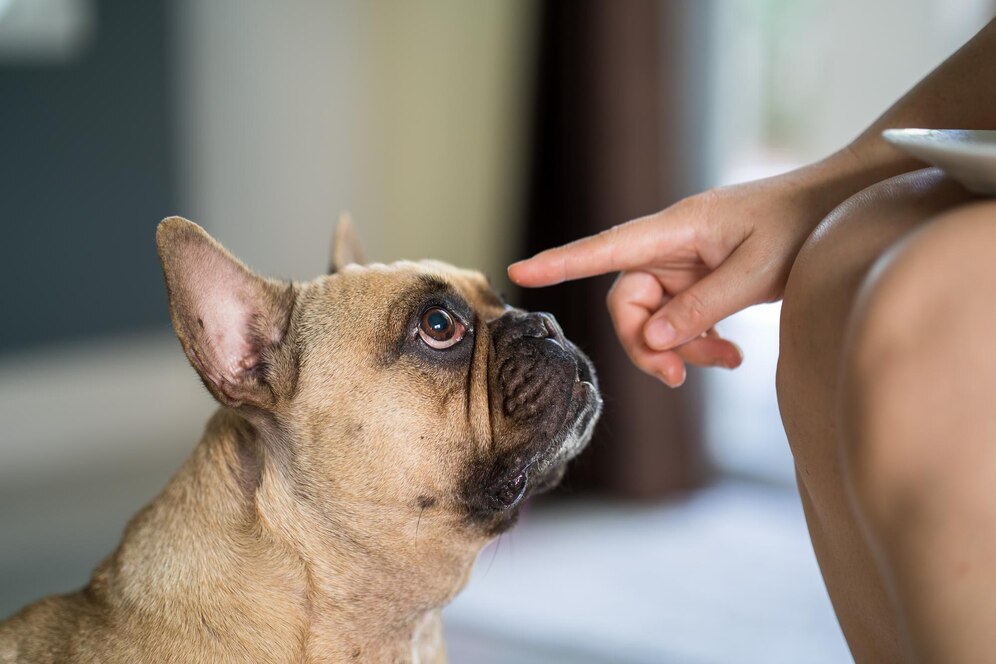
Your dog seems to be communicating when they lock eyes with someone or something. A fixed, intense look may indicate aggression or a sense of menace. They seem to be warning you, “Beware, I’m on edge.”
Growling
Dog bites are far too prevalent, especially when young children are involved. Any dog will bite if provoked, but certain breeds, like pit bulls, are built with incredibly strong jaws meant to kill prey. In some situations, all dogs have the capacity to be aggressive. It is the owner’s responsibility to control circumstances to stop biting.
A Home with Multiple Dogs
Care must be taken when bringing a new dog into a home with an existing dog. When a new dog appears to threaten the status quo or their resources, established dogs frequently respond with aggression. Present in an impartial setting, such as a park. To relieve tension, keep early exchanges short. Dogs should never be left unattended alone. A bed, bowl, and toys should be provided for every dog.
Facing Breed Bias
Own a pit bull or any other breed that is frequently maligned? Despite a tonne of data demonstrating these dogs aren’t inherently aggressive, you’ve undoubtedly run into some raised eyebrows or outright restrictions from landlords. Being ready to manoeuvre past societal preconceptions can make all the difference in the world.
Public Areas
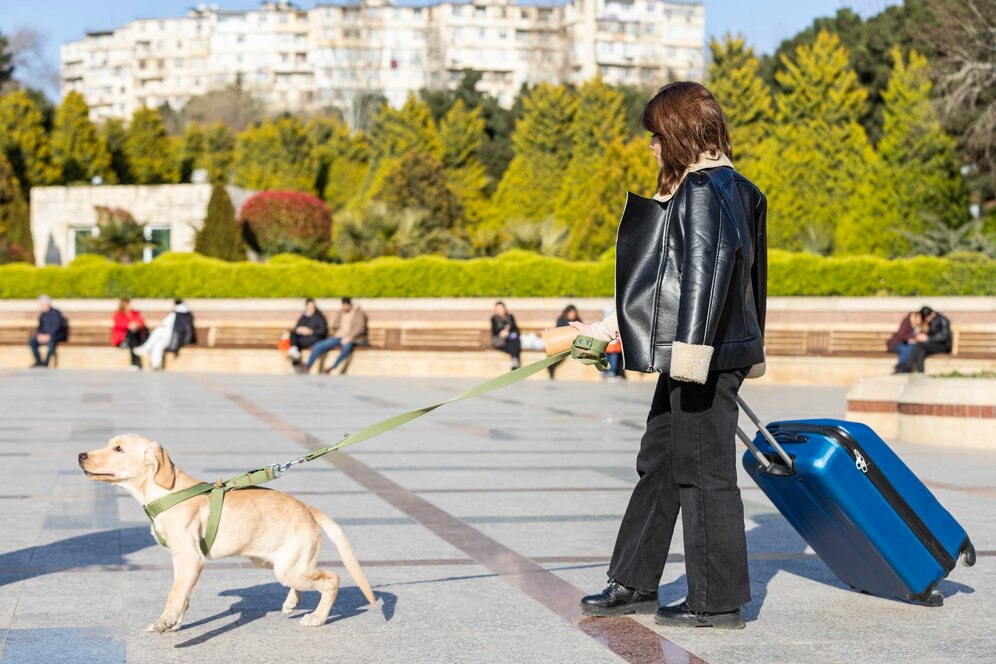
Taking dogs around is one of their many joys, but before bringing them into public, consider your options carefully. Even while the majority of pets are well-mannered, dogs that are excessively fearful, reactive, or unruly can cause trouble or even be deadly in crowded areas. It makes sense that screaming, biting, snapping, or urinating inside of establishments would result in complaints and repercussions.
Car Rides
Dog travel entails risks in addition to typical disruptive behaviour. Many dogs become nervous or queasy when they ride in cars, which increases the risk of vomiting and car sickness. Restraint, distraction, and antiemetic medications can be helpful. Additionally hot cars are harmful, where temperatures can rise dangerously high in a matter of minutes. On warm days, never leave dogs in the car!
Air travel
The first thing you should do is choose an airline that allows pets. Make sure you have all the required health certificates and are familiar with the quarantine regulations of the country you are visiting if you are travelling abroad. A pre-flight checklist should include visiting your veterinarian to make sure your dog is healthy enough to fly and to go over any recommended calming medications.
Reactive Actions
On walks, your dog may become a barking, lunging ball, but this isn’t always an indication that they’re trying out for the part of neighbourhood troublemaker. This reactive behaviour—directed at humans or other dogs—often indicates anxiety, tension, or excessive excitement. Your dog seems to be saying, “Whoa, there’s too much going on here. Back off!”
Veterinary Fees
These days, it seems like veterinary care is very expensive, but dogs need healthcare just as much as people do. Investigate local costs to prevent sticker shock. Spend your money carefully and take advantage of the different clinics’ preventative care packages. Pet insurance offers coverage for unforeseen, significant expenses like emergencies or cancer treatments.
Marking indoors
Pee stains on furniture, walls, or any vertical surface indicate that your dog has become an interior decorator. Prior to reacting angrily, acknowledge that indoor marking is a normal behaviour in dogs, particularly in intact males protecting their territory from outsiders.
Senior Dogs
The pleasure of owning a dog makes the inevitable bereavement of losing them in old age very agonising. When your senior dog starts to deteriorate and veterinary care is no longer helpful, you should be aware that end-of-life decisions are coming. After vigorous therapies will only make pain worse, put your attention on comfort and quality of life.
Separation Anxiety
The minute you leave the house, your dog probably has separation anxiety if they become a one-man wrecking team or an opera star howling heartily. You can almost hear your dog saying, “Stay put! I cannot stand being by myself!” Indeed, your dog’s overly theatrical method of coping with loneliness is evident in the chewed-up couch and the neighbourly complains.
Holidays
Yes, the adventure’s allure is strong, but what about the dog? Before you jet off to your far-flung holiday, keep in mind that adding a furry family member makes vacations more of a puzzle. But fear not—with a little strategic forethought, the tension can be reduced! Your initial choice? A house pet sitter, your dog’s angelic guardian at home. Examine them thoroughly; treat it like a job interview for the most significant nanny you would ever employ.
Playing with dogs as toddlers
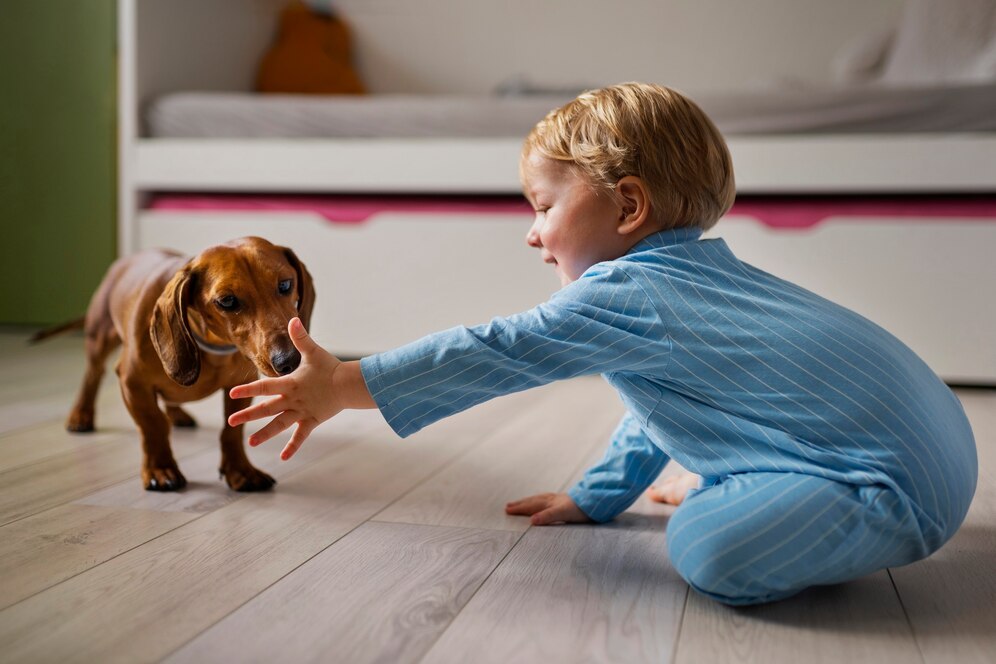
There should be caution when bringing a dog into a house with little children. Young children frequently treat animals forcefully, which might result in bites or falls. Dogs and young children should never be left unsupervised. Establish boundaries and courteous behaviour. Teach children about the emotional and fearful body language of dogs. Teach your dog how to be petted softly so they don’t be yanked, poked, squeezed, or startled.
A protective Breed
So you’ve taken in a four-legged guardian, possibly a terrier, mastiff, or shepherd? Well done! However, exercise caution: these breeds were bred to protect property. Inadequate socialisation and training could lead to them misinterpreting threats and biting strangers or guests. Playing puzzle games and engaging in mentally demanding tasks can satiate their innate desire for purposeful labour.
Chasing Rabbits
Observing your dog joyfully pursue a squirrel, rabbit, or deer is rather endearing. Although it’s simple to write this off as a harmless dog activity, the truth is much more dire. Your dog may sustain serious injuries like torn ACLs as a result of those abrupt stops and zigzags while pursuing. Furthermore, these interactions can develop into more than just a harmless game of tag; they could put your dog in danger of contracting diseases spread by ticks, or they could even end with a strong kick to the head from an evasive rabbit.
Food Choices
Choosing the best dog food can be daunting because there are so many options available that all claim to offer health advantages. Consult your veterinarian about the right kinds and quantities of food for your dog. Quality matters, so choose a reliable brand that complies with veterinary regulations. Choose the food that works best for your particular dog—grains, grain-free, canned, or kibble.
Compulsive Behaviour
You may feel as though you are living with a four-legged fanatic if your dog appears to be obsessed with a toy, shadow-chasing, or engaging in any other repeated behaviour. When a dog’s behaviour changes from being excited to being fixated, it seems as though they are trapped in a cycle and are only thinking about that one item. It’s similar to binge-watching a TV show on their dogs, but without the snacks and shocking endings. Redirecting that laser-like attention into more constructive endeavours can be greatly aided by behavioural therapy. See it as a kind of canine mindfulness retreat where your dog discovers that they enjoy multiple activities instead of just one and learns to broaden their interests.
